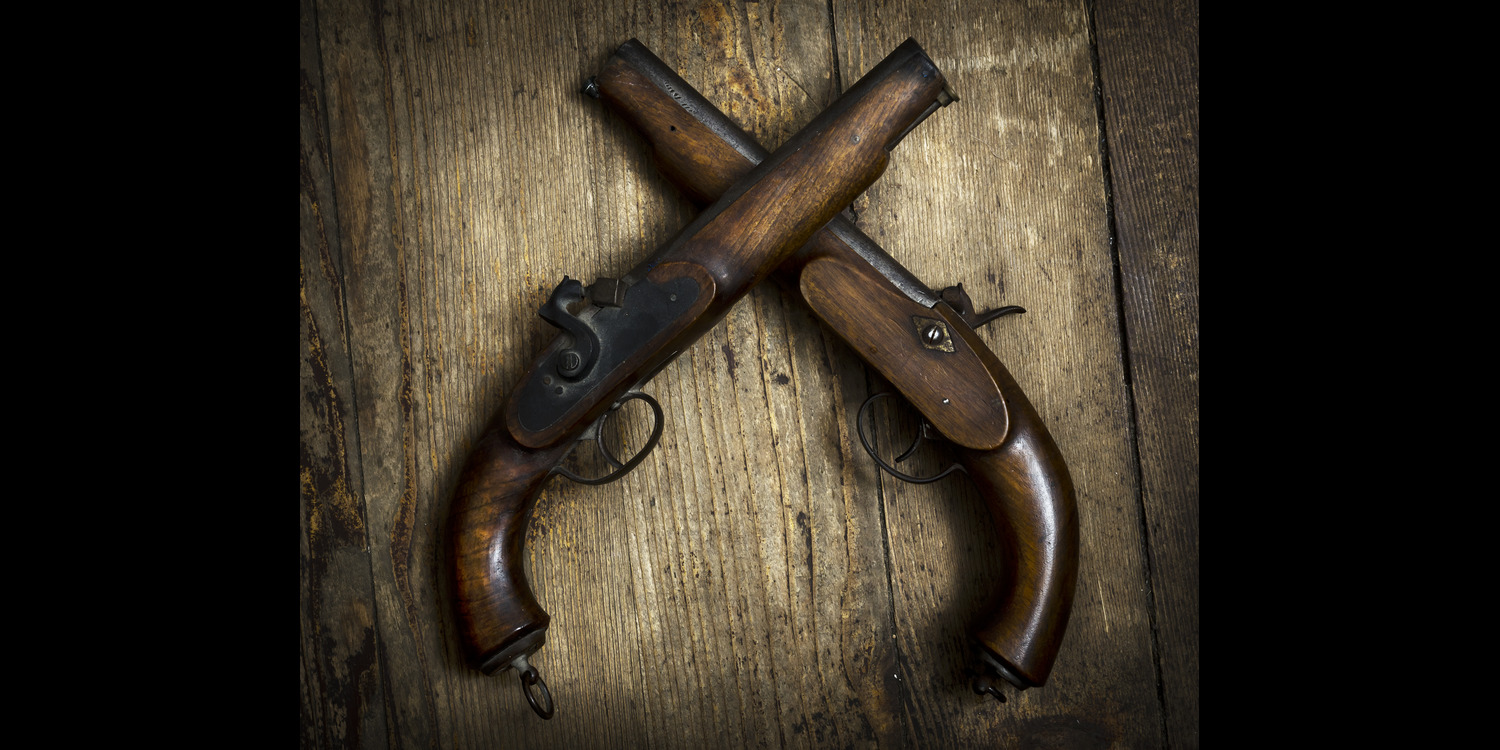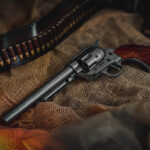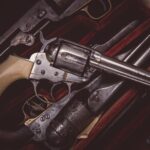Dueling pistols symbolize a time when personal honor was paramount, and disputes between individuals often culminated in lethal face-offs on the dueling ground. This blog delves into the historical evolution, mechanical intricacies, and cultural context of dueling pistols, shedding light on their role in society.
Historical Evolution
Early Development Dueling with firearms emerged in Europe during the 16th century, primarily with flintlock pistols. These early duels were often fought over matters of honor, and the outcome was considered a judgment of one’s character. As dueling gained popularity, specialized pistols were developed to ensure fairness and accuracy.
Dueling pistols were typically single-shot, smoothbore firearms characterized by their long barrels, adjustable sights, and hair triggers. These features aimed to provide precision and reliability during a duel. Gunsmiths like Henry Nock and Robert Wogdon in 18th-century England and Nicolas-Noël Boutet in France were renowned for their craftsmanship in creating dueling pistols.
The early 19th century saw a transition from flintlock to percussion cap ignition systems. This innovation improved reliability and eliminated the need for loose powder, making dueling pistols more practical and efficient.
Mechanics of Dueling Pistols
Dueling pistols were typically chambered in small calibers, such as .36 or .45, which allowed for greater accuracy and reduced lethality. Using round balls rather than conical bullets ensured consistency in flight and impact.
While early dueling pistols had smooth bore barrels, some later models featured rifled barrels, imparting spin to the projectile, increasing accuracy at longer distances. However, smoothbore guns remained popular due to their reliability in close-quarters combat.
Dueling pistols were known for their hair triggers, reducing the force required to fire the weapon. Hair triggers made them more responsive but also more prone to accidental discharges.
Cultural Significance
Dueling was a deeply ingrained part of the aristocratic culture in Europe and the United States during the 17th to 19th centuries. It was seen as a means of resolving personal conflicts and upholding one’s honor. Codes of honor, such as the Code Duello, provided guidelines for conducting duels.
Dueling, with its aura of drama and tragedy, inspired countless literature, theater, and artworks. Notable examples include Alexandre Dumas’ “The Three Musketeers” and Giuseppe Verdi’s opera “La Traviata,” featuring dueling scenes that underscore the cultural significance of these confrontations.
Over time, dueling fell out of favor due to its lethal nature and the changing societal norms. As laws and public opinion shifted, dueling became increasingly illegal and socially unacceptable. The last recorded duel in the United States occurred in 1859 between David C. Broderick and David S. Terry.
Dueling Pistols, With Their Elegant Design and Intricate Mechanics, Hold a Unique Place in History
They were not just instruments of death but symbols of honor, courage, and the complex dynamics of human relationships. As dueling faded into obscurity, these pistols became relics of a bygone era, serving as a tangible link to when personal honor was a matter worth defending on the dueling ground.





